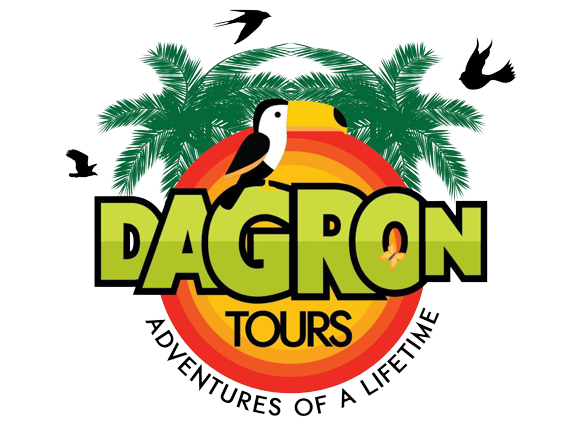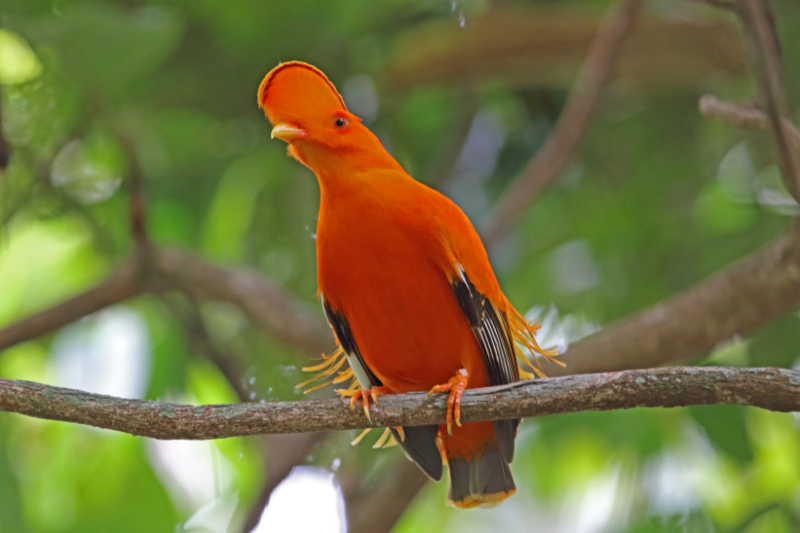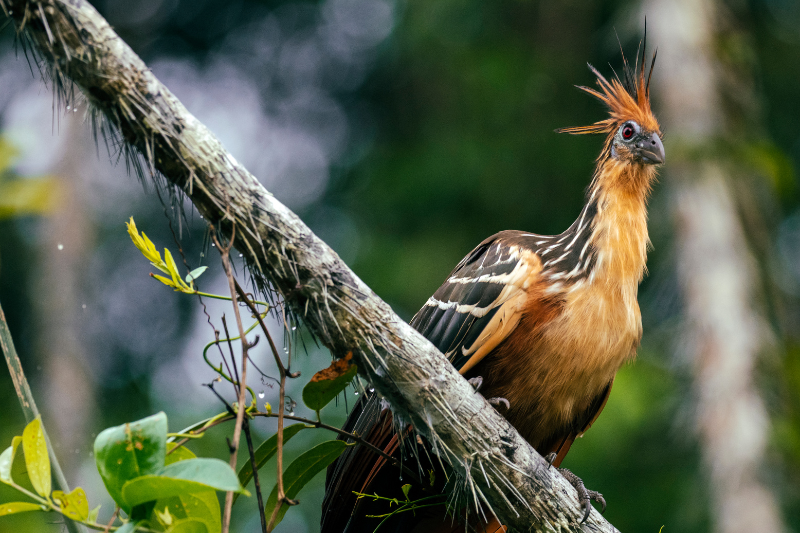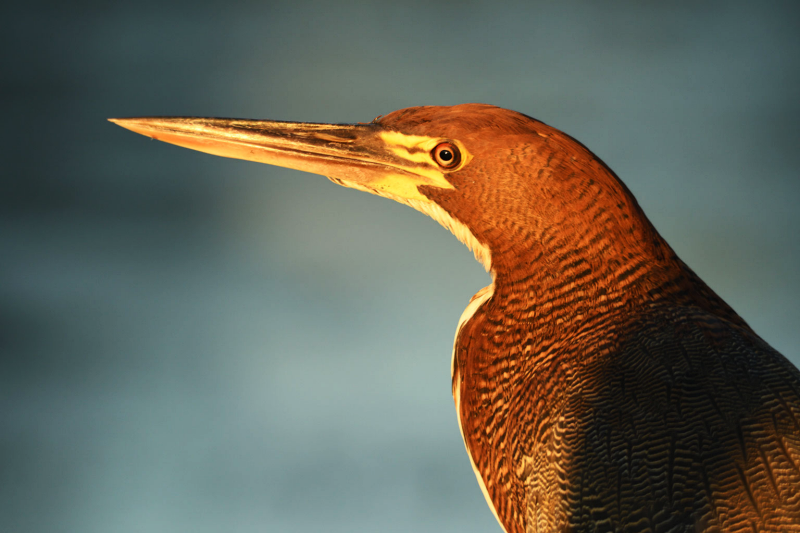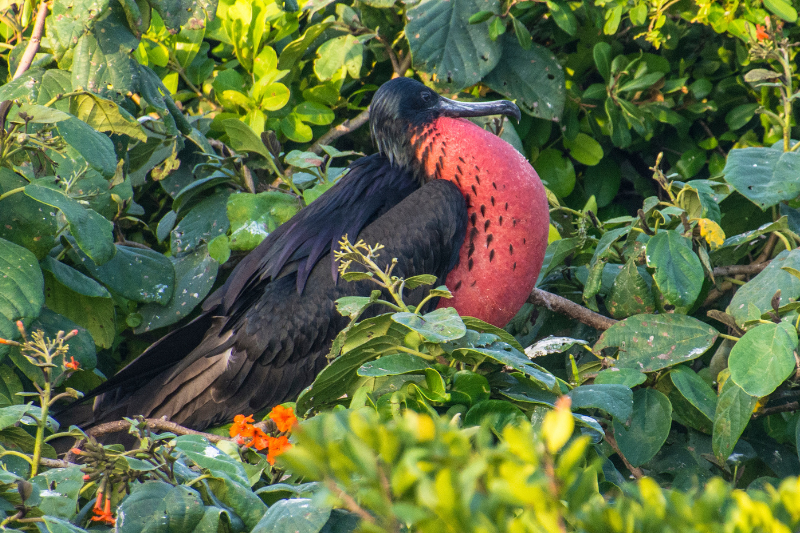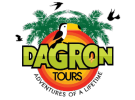- Overview
- Trip Outline
- Trip Includes
- Trip Excludes
- Gallery
- Booking
- FAQ
An in-depth birding discovery tour that focuses on excellent birding from comfortable rainforest and river resorts along the Essequibo River and the Rupununi Savannahs. We will visit the famous Kaieteur Falls, Iwokrama, Atta Lodge, Surama, Rewa, Karanambu Ranch, Dadawana Ranch, and Sloth Island.
An in-depth birding discovery tour focusing on excellent birding from comfortable rainforest and river resorts along the Essequibo River and the Rupununi Savannahs. We will visit the famous Kaieteur Falls, Iwokrama, Atta Lodge, Surama, Rewa, Karanambu Ranch, Dadawana Ranch and Sloth Island.
Itineraries
Day 1
Arrival
On arrival at Cheddi Jagan Airport in Guyana, you will be met and transferred to your hotel in Georgetown.
Depending on your arrival time, you'll visit the Botanical Gardens in the afternoon for Blood-coloured Woodpeckers, White-bellied Piculet and Festive Parrots such as Snail Kites, Limpkins and Donacobius, Red-bellied and Red-shouldered Macaws, Black-crested Antshrike and many more species.
Overnight at Herdmanston Lodge
Day 2
Kaieteur Falls/Iwokrama
After breakfast, we transfer to Ogle Airport for your flight to Kaieteur Falls, the world's highest single-drop waterfall. Kaieteur is located on the Potaro River and is 741 feet (225 meters) high and five times the height of Niagara Falls.
The falls are impressive as we search for White-chinned and White-tipped Swifts, the rare Guianan Cock-of-the-rock, the Orange-breasted Falcon and many more species that adorn the national park. We then fly to Iwokrama Rainforest Reserve.
Iwokrama is a one-million-acre reserve established in 1996 under a joint mandate from the Government of Guyana and the Commonwealth Secretariat to manage the Iwokrama forest "in a manner that will lead to lasting ecological, economic and social benefits to the people of Guyana and the world in general".
Besides being a research centre, Iwokrama promotes ecotourism, a venture that sees many international tourists visiting daily.
We stay at the River Lodge, which features comfortable cabins overlooking the Essequibo River.
After dinner, enjoy a boat tour in the Essequibo River in search of nocturnal wildlife.
Meals included: breakfast, lunch, dinner)
Accommodation: Iwokrama River Lodge
Day 3
Iwokrama
After breakfast, we will leave the field station travelling by boat for half an hour to the foot of Turtle Mountain, then commence a leisurely stroll up the mountain to its summit at 953 feet (106 meters).
This mildly challenging stroll takes about 1 to 1 1/2 hours to walk up the mountain, but the effort is more than worth it for the breathtaking views over the forest canopy.
We hope to see Red-and-Black Grosbeak, Golden-sided Euphonia, Scarlet Macaw, Ornate Hawk-Eagle, Cream-coloured and Ringed Woodpeckers and more. Return to the field station for lunch.
After lunch, we search for more birds around the lodge. After dinner, we take a boat on the river to look for the Ladder-tailed Nightjar.
Meals included: breakfast, lunch, and dinner)
Accommodation: Iwokrama River Lodge
Day 4
Transfer to Atta Rainforest Lodge
As we leave Iwokrama, we'll bird along the roadway arriving for lunch at Atta Lodge.
The 154-metre (505-foot) state-of-the-art Iwokrama Canopy Walkway offers a unique experience in the region and envelopes you in the jungle's mid-level canopy through a series of suspension bridges and decks from heights of up to 30 metres (98 feet).
You’ll have the chance to see birds like the Green Aracari, Scarlet Macaw, Guiana Toucanette or Channel-bill Toucan.
Red howler Monkeys may also be observed. Check out the epiphytes, such as orchids and bromeliads, and look for the amazing parasitic ficus plant as it engulfs another tree.
There is also the greenheart tree, the waramadan (endemic in Guyana only to the Iwokrama Forest) and the poisonous aromata!
Meals included: breakfast, lunch, and dinner)
Accommodation: Atta Rainforest Lodge
Day 5
Drive to Surama Eco-Lodge
After breakfast, transfer by 4x4 to Surama and be welcomed by the village counsellor. Afterwards, you will explore the village with your local guide.
You will visit the local school, medical centre and church, and some of the village houses. We bird around the lodge in search of Great Jacamar, Green and Black-necked Aracaris, Black-spotted Barbet, Yellow-throated Flycatcher, Buff-throated Foliage-gleaner, several woodcreepers including Amazonian-Barred, Black-banded and Olivaceous.
The Eastern Slaty-Antshrike, Tiny Tyrant-Manakin, and several antbirds, including Rufous-throated, Scale-backed and Wing-banded Spotted Antpitta.
If lucky, the Rufous-winged Ground Cuckoo, Red-and-green Macaw, and Red-fan and Blue-headed Parrots will be seen.
In the afternoon, we bird in an area where we will have opportunities to see the Guianan Cock-of-the-rock.
The evening is rounded off by searching for White-tailed Nightjar and Least and Lesser Nighthawks.
(Meals: breakfast, lunch, dinner)
Overnight at Surama Eco-Lodge
Day 6
Rewa
After breakfast, we drive south to Annai by 4x4 to Kwatamang landing. Then travel along the Rupununi River with opportunities of seeing wild giant river otters and black caiman.
You will pass locals fishing and bathing in the river until you reach the Rewa River and the Amerindian community of Rewa. The journey is approximately 50 miles by river and can be as short as 2 hours and as long as 4 hours, depending on the water level.
Rewa Village is located where the Rewa River runs into the Rupununi River in North Rupununi. The surrounding area is rainforest, mountains and oxbow lakes teeming with wildlife, birds and fish.
The community of approximately 220 persons is predominately Macushi, with a few families of the Wapashani and Patamona tribes. Villagers practice subsistence farming, fishing and hunting with little opportunity for cash employment.
In 2005 the community constructed the Rewa Eco-lodge so that they could establish a sustainable eco-tourism business. Once settled in, take a walk through the community of Rewa to see how the locals live.
Visit villagers' houses where you can experience their everyday life and see activities such as grating cassava, weaving baskets and tending kitchen gardens.
(Meals: breakfast, lunch, dinner)
Overnight at Rewa Eco Lodge
Day 7
Rewa
This morning travel by boat to a nearby trail for a hike through the rainforest and into the savannah. See traditional local farms, and if you're lucky, a family may be there practising their indigenous farming methods. This afternoon take a boat up the Rewa River.
You may see red howler monkeys, squirrel monkeys and brown capuchins along the river banks. This area has a large population of giant river otters. Then take a 15-minute hike to Grass Pond, about 3 kilometres (1.86 miles) long and is a beautiful setting with Victoria Amazonica.
Grass Pond has a good population of Arapaima (reportedly the highest density in Guyana), the largest freshwater fish in the world, and you can also fish for Peacock Bass.
You may see the brown capuchin monkey or capybara during a late afternoon visit. Birds likely to be seen include Limpkin, Wattled Jacana, Black-collared Hawk, Green Kingfisher and Guianan Puffbird.
As dusk settles, watch the flower of the Victoria Amazonica bloom.
Meals: breakfast, lunch, dinner)
Overnight at Rewa Ecolodge
Day 8
Journey by boat to Karanambu Ranch
Transfer by boat to Karanambu Ranch, birding along the river as we go along. At Karanambu, we will be greeted by Diane McTurk, our host, who is famous for rehabilitating orphan otters to the wild.
She has appeared in many films, such as National Geographic, Jeff Corwin Experience, Really Wild Show (BBC) and Calgary's Zoo World. These days there are no resident otters because Diane has successfully rehabilitated orphan otters so they can return to the wild.
Diane will share beautiful stories about her life in the Rupununi. Karanumbu Ranch is located within the rainforest and savanna.
Many birds can be observed along nearby rivers and ox-bow lakes, such as Capuchin, Striped Woodcreeper, Pale-bellied Tyrant-Manakin, Slate-headed Tody-Flycatcher, Bearded Tachuri, Bicolored Wren and White-tailed Goldenthroat. As we go along the rivers, we can observe the Jabiru Stork, Rufescent Tiger-Heron, Ringed and Amazon Kingfishers, Purple Gallinule, Agami Heron and Wattled Jacanas walking on water lilies.
In the late afternoon, we'll most likely see Lesser Razor-billed Curassow, Sunbittern, Black-chinned Antbird and Boat-billed Heron.
Meals: breakfast, lunch, dinner)
Overnight at Karanambu Lodge
Day 9
Karanambu Ranch
Across the savannah, we search for Bearded Tachuri, Sharp-tailed Ibis, Yellowish Pipit, Pinnated Bittern, Brazilian Teal, Vermillion Flycatcher, Bicoloured Wren, Double-striped Thick-knee and Maguari Storks. This is also our best chance to see the remarkable giant anteater.
In the afternoon, we travel on the Rupununi River to Simony Lake, where we will likely find Green-and-rufous Kingfisher, Bare-necked Fruitcrow and Spot-breasted Woodpecker.
In addition, we will look for black and spectacled caiman, giant river otters and many species of monkeys.
(Meals: breakfast, lunch, dinner)
Overnight at Karanambu Lodge
Day 10
Transfer to Lethem
After breakfast, we drive south to Lethem, a town located at the border of Brazil. We do some savanna birding along the Takatu River.
(Meals: breakfast, lunch, dinner)
Overnight at Takatu Hotel
Day 11-12
Dadanawa Ranch
Transfer by vehicle from Lethem to Dadawana Ranch, Guyana's largest working cattle ranch. Dadawana is one of the world's oldest, largest, and most isolated ranches.
It is situated upon 1700 square miles of savanna in the South Rupununi region of Guyana, and it is here that the cattle graze free-range.
Accommodation is in typical stilted wooden houses facing the savanna, offering panoramic views of the majestic Kanuku Mountains. Dadanawa Ranch is a sanctuary for the endangered Red Siskin. It is ideal for birding, fishing, horseback riding, travelling to neighbouring Amerindian villages or visiting the out-stations of the Ranch.
The rainforest is close at hand, offering terrific hiking, cave exploration and ancient Amerindian petroglyph sightings.
But above all else, Dadanawa is still a working ranch where visitors can observe the barefooted vaqueros work cattle the same way they have been doing for over a hundred years.
On our visits, we will search for Curatella Flycatchers and raptors, and the elusive Red Siskin is known to be found here.
(Meals: breakfast, lunch, dinner)
Overnight at Dadawana Ranch
Day 13
Fly to Georgetown/transfer to Sloth Island Reserve
Today, we head to the town of Parika, driving over the Demerara River, Guyana's second-largest River.
The Harbor Bridge is the longest floating bridge in the world. As a result, we may be lucky to see scarlet ibis along the sand banks of the Demerara River.
We'll continue our journey by boat along the Essequibo River, Guyana's largest River, being 21 miles wide at its widest point. We continue to Sloth Island, a 155-acre wildlife sanctuary along the Essequibo River. The accommodation is comfortable and spacious ensuite rooms.
Sloth Island has recorded over 200 species, including the Rufescent Tiger Heron, Cocoi Heron, Great Egret, Green Ibis, White-necked Jacobin, Rufous-throated Sapphire, Black-eared Fairy, Crimson Topaz, White-necked Puffbird, Pied Puffbird, Curve-billed Scythebill, Cayenne Jay, Green-tailed Jacamar, Paradise Jacamar, Green Aracari, Scarlet Macaw, Guiana Toucanette and Channel-bill Toucan. In addition, red Howler Monkeys and sloths may also be observed.
(Meals: breakfast, lunch, dinner)
Overnight at Sloth Island Nature Reserve
Day 14
Kykoveral and Parrot Island
Explore the surroundings of Sloth island at dawn for species, including the Violaceous and Plumbeous Euphonia, Green Oropendola, Blue Dacnis, Green Honeycreeper, Short-billed Honeycreeper, Purple Honeycreeper, Red-legged Honeycreeper and more.
After lunch, we will take a boat trip along the Mazaruni River to Marshall Falls. An easy trail leads into the rainforest, where we will search for Pygmy Antwren, White-bearded Manakin, Guianan Warbling Antbird, Caica Parrots, Spotted Antpitta and many more species.
In the late afternoon, we then travel to Parrot Island, where hundreds of Orange-winged Amazons come to roost.
(Meals: breakfast, lunch, dinner)
Overnight at Sloth Island Nature Reserve
Day 15
By Boat and vehicle to Georgetown/afternoon Botanical Gardens
Enjoy a dawn session at the Botanical Gardens for specialities such as three of the world’s rarest birds — Blood-coloured Woodpeckers, White-bellied Piculet and Festive Parrots. We may also see Macaws, including both Red-bellied and Red-shouldered. Black-crested Antshrike, White-bellied and Golden-spangled Piculets, Crimson-crested Woodpecker, Yellow-chinned Spinetail, and Turquoise Tanager are among the 200 species found here.
(Meals: breakfast, lunch, dinner)
Overnight at Herdmanston Lodge
Day 16
Departure
After breakfast, we transfer to Cheddi Jagan International Airport for our departing flight home.
No details found.
No details found.
No Details Found
